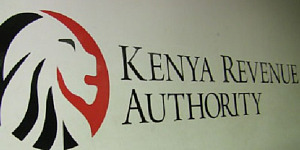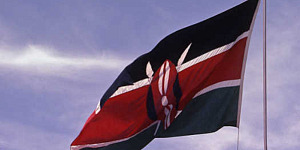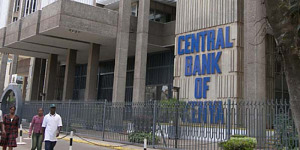President William Ruto signed into law the Climate Change (Amendment) Bill 2023 on September 1, setting the stage for the regulation of carbon markets.
The new law will also bolster Kenya’s ability to mobilise resources to strengthen its capacity for climate resilience initiatives.
With the new law, Kenya joins several countries globally, including South Africa, India, Indonesia, and Vietnam, in efforts to set up domestic carbon trading markets as the need for more financing towards combating the adverse effects of climate change.
Kenya will soon have a carbon registry, which will allow trading in carbon credits.
“Clause 6 amends section 8 of the Climate Change Act to empower the Cabinet secretary to appoint the designated national authority for market mechanisms and any other mechanisms deriving from Article 6 of the Paris Agreement. The designated national authority appointed shall also maintain the national carbon registry established under new section 23G,” the National Assembly indicated in its brief to the President.
But what does all this mean and why should ordinary Kenyans care about it?
To make sense of it all, we need to revisit the 1997 International Climate Change Treaty, popularly known as the Kyoto Protocol, which brought about the system of ‘cap and trade’ as the world’s core intervention in addressing greenhouse gas emissions.
Imagine a scenario where the government sets a cap on how much greenhouse gas any entity can generate and sets a price on the same.
Ideally, this will be reduced with every passing year to ensure that over time, the country transitions to, as much as is practically possible, near-zero emission of greenhouse gases into the environment.
How ‘cap and trade’ works is that governments through regulatory bodies set caps on the amount of greenhouse gases that can be emitted by players in the economy.
The cap is then split into credits, which are then sold to firms. Through this, the government not only creates a disincentive for greenhouse gas emissions but also generates a pool of funding, which can then be channelled towards initiatives that bolster climate risk resilience.
With this in mind, one can think of carbon credits as a certificate an entity secures for demonstrable efforts that result in the removal of one tonne of carbon dioxide from the environment.
If a company finds itself with credits it is unable to use immediately, it can then trade the same. In sum, carbon credits are a function of greenhouse gas emission reduction.
The mission is to reduce emissions into the environment by charging polluters and, therefore, disincentivising the same and that’s where carbon pricing comes into play.
Globally, carbon credits are issued and regulated by the United Nations Framework Convention on Climate Change, a UN body set up in 1992 to catalyse the global response to threats brought about by climate change.
Increasingly, however, more countries are looking to set up their frameworks through, which carbon credits can be issued and traded.
According to data from the World Bank, 475 million carbon credits were issued in 2022, a 22 percent decline from the volume of credits issued in 2021.
The bank has attributed the decline in carbon credits issued to the relatively adverse macroeconomic environment, which impacted the performance of businesses globally.
“After two years of rapid growth, carbon credit markets slowed in 2022. Supply of new credits and demand from end users both fell. Independent credit mechanisms issued 275 million credits which accounted for 58 percent of the 475 million credits issued in 2022,” states the World Bank.
Shifting energy production from thermal plants to renewable sources such as geothermal and hy-dro is one source of generating carbon credits because the shift ensures that the amount of green-house gases being released into the atmosphere declines.
This explains why renewable energy activities are reported to represent 45 percent of registered projects generating carbon credits globally and continue to dominate supply in carbon credit mar-kets.
In Kenya Electricity Generating Company (KenGen) booked Sh12.7 million in revenue generat-ed from trading carbon credits.
“KenGen, with a generation portfolio of 86 percent renewable energy sources is taking deliberate steps to reduce carbon emissions with actions and commitments locally and internationally. The company’s actions in carbon emission reduction towards a net-zero future have earned KenGen global funds,” KenGen states in its latest annual report.
A few other entities listed on the Nairobi Securities Exchange have also made steps in giving performance metrics as far as the reduction of their carbon footprint is concerned and this shows that there exists an opportunity for companies in Kenya to leverage the opportunities presented by carbon markets.
“Introduced science-based carbon reduction targets to help us plan our progress towards becoming a net zero carbon emitting company by the year 2050. In FY22, we reduced our overall emissions by six percent from 66,119 tonnes to 62,073 tonnes,” states Safaricom PLC in its 2023 annual report.
Diageo subsidiary, East African Breweries Ltd, states in its 2023 annual report: “EABL has significantly reduced its carbon footprint by installing and commissioning biomass boilers in our production sites in Nairobi and Kisumu. As a result, our carbon emissions were reduced by 55 percent this year to 28,134 tonnes. This has also seen renewable energy use across our sites increase to 65 percent this year.”
In the days ahead, companies in Kenya will likely be subjected to mandatory disclosures on environmental sustainability performance alongside their standard quarterly reporting on earnings performance.
This is because the inaugural global Sustainability Reporting Standards, IFRS S1 and IFRS S2, are slated for launch in Kenya on September 5.
“For the first time, the Standards create a common language for disclosing the effect of climate-related risks and opportunities on a company’s prospects. The Institute, in collaboration with PAFA, is pleased to announce the official launch of the Standards in the Kenyan Market on the 5th of September 2023,” says Institute of Certified Public Accountants of Kenya CEO Grace Kamau.
IFRS S1 deals with general requirements for disclosure of sustainability-related financial information and ensures that companies disclose information about any sustainability-related risks and opportunities that could substantively impact the company’s cash flow.
IFRS S2, on the other hand, requires companies to make disclosures regarding any climate-related risks and opportunities that could substantively impact their cash flow, its access to finance and cost of capital.
Both IFRS S1 and IFRS S2 were launched by the International Sustainability Standards Board (ISSB) on June 26th, 2023 and both standards have January 1st, 2024 as the effective date.
“To reinforce the significance of sustainability, the International Sustainability Standards Board (ISSB) issued its inaugural standards—IFRS S1 and IFRS S2—ushering in a new era of sustainability-related disclosures in capital markets worldwide. The Standards will help to improve trust and confidence in company disclosures about sustainability to inform investment decisions,” Dr Grace Kamau says.
The road ahead: Diversifying climate financing sources
On November 7, Kenya is expected to make its first drawdown from the $551.4 million, about Sh80.2 billion, Resilience and Sustainability Facility (RSF) secured from the International Monetary Fund (IMF) in July.
As a condition for this drawdown, Kenya will have to demonstrate that it has incorporated climate risk consideration into its national planning and investment framework.
The IMF’s RSF is among the latest resource envelopes in a growing pool of financing mechanisms designed to help countries bolster resilience in the wake of climate-related shocks.
Climate financing has gained momentum in the recent past as shocks such as drought and floods wreak havoc, necessitating a rethink of how to build resilience, especially among developing economies such as Kenya.

























































